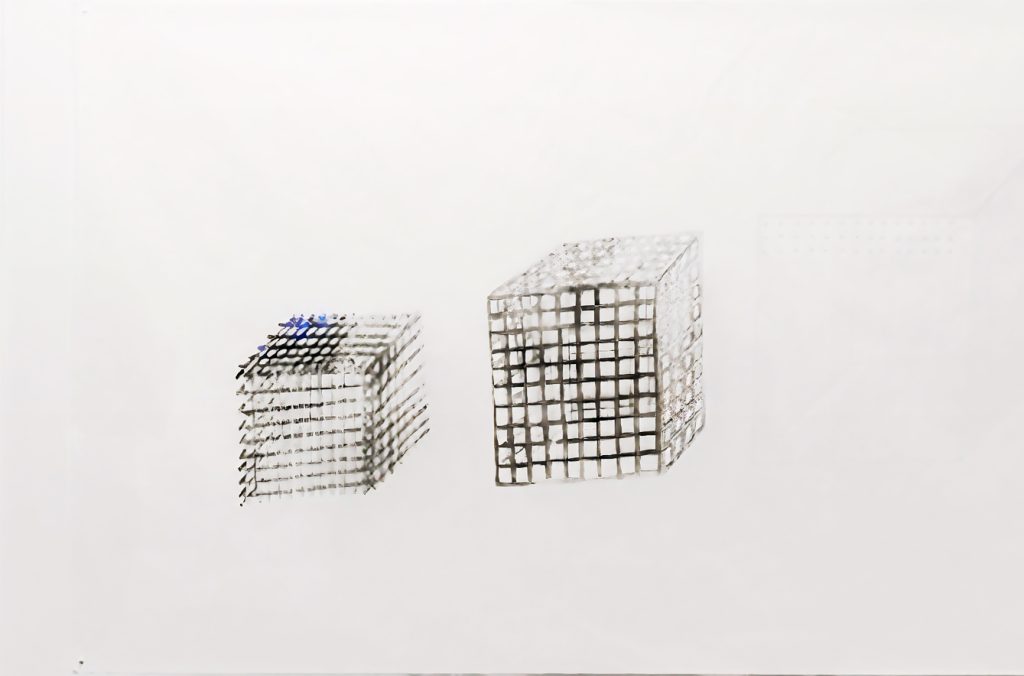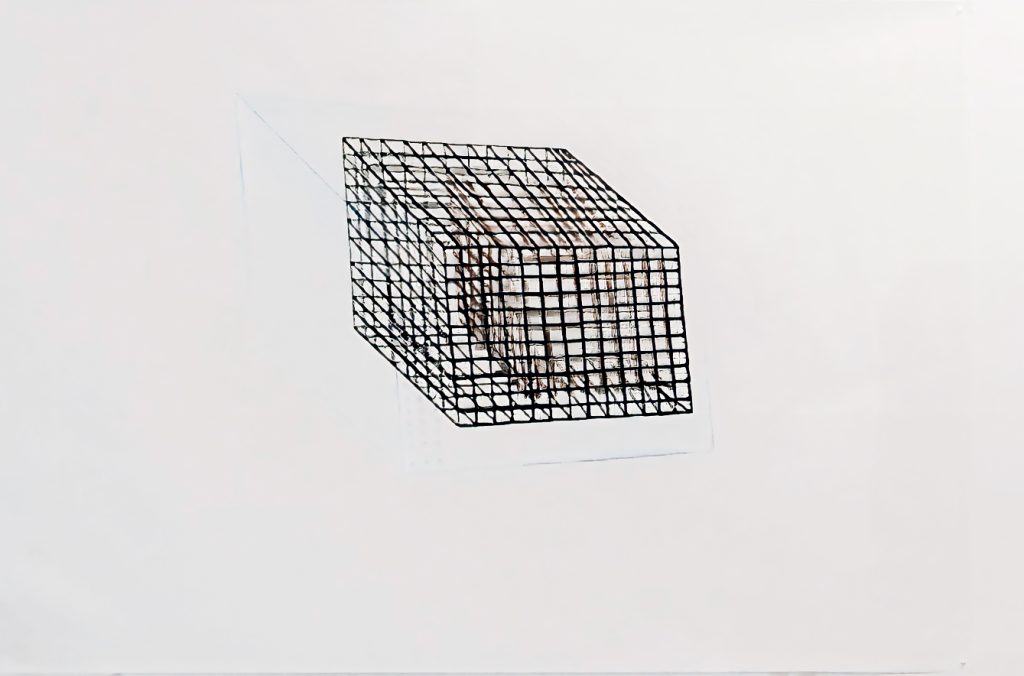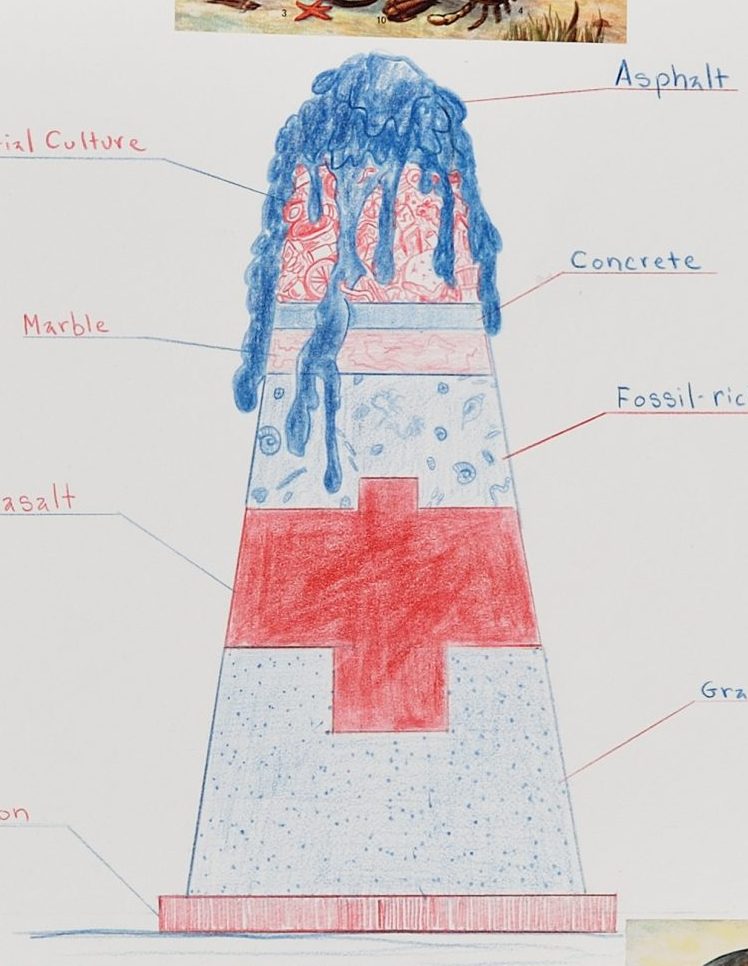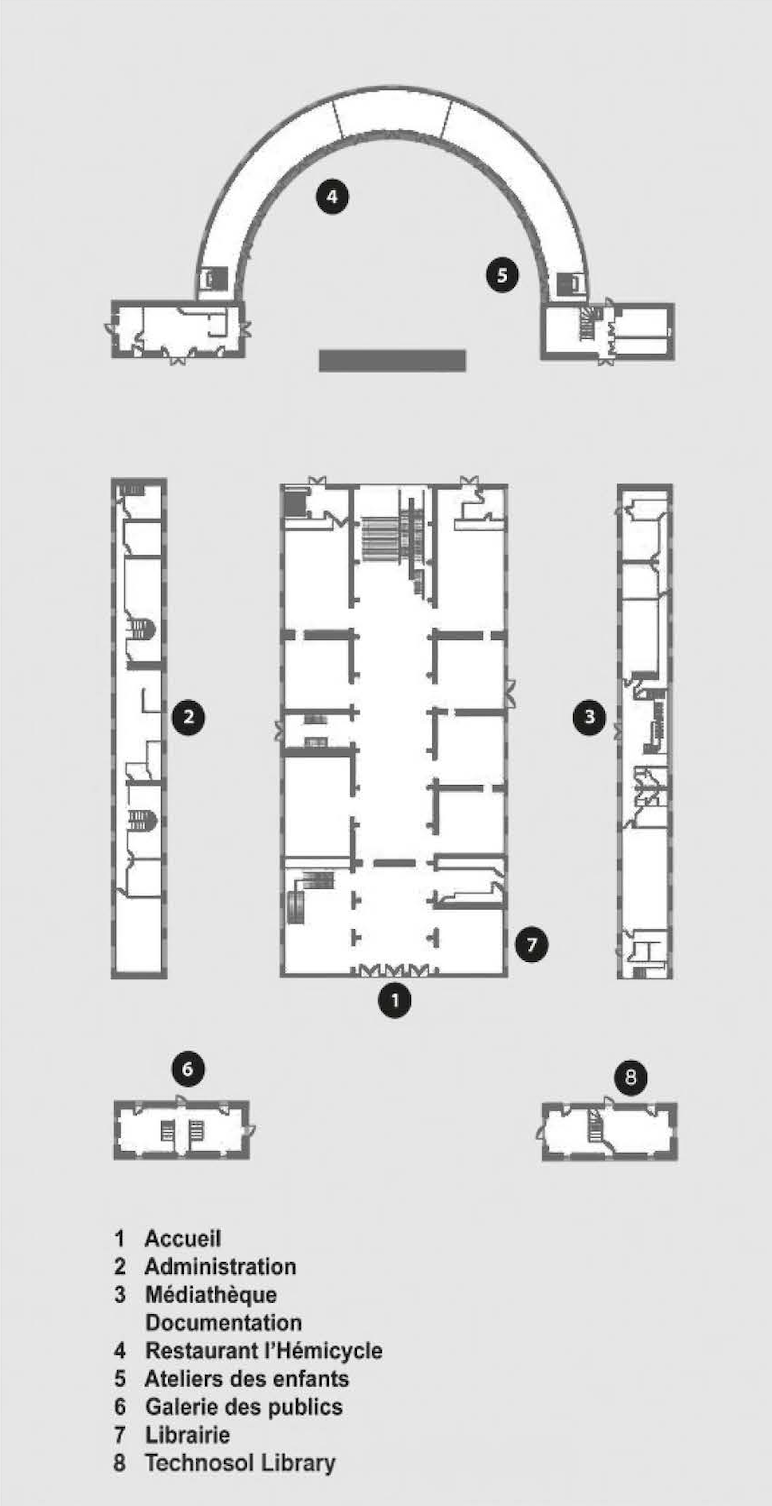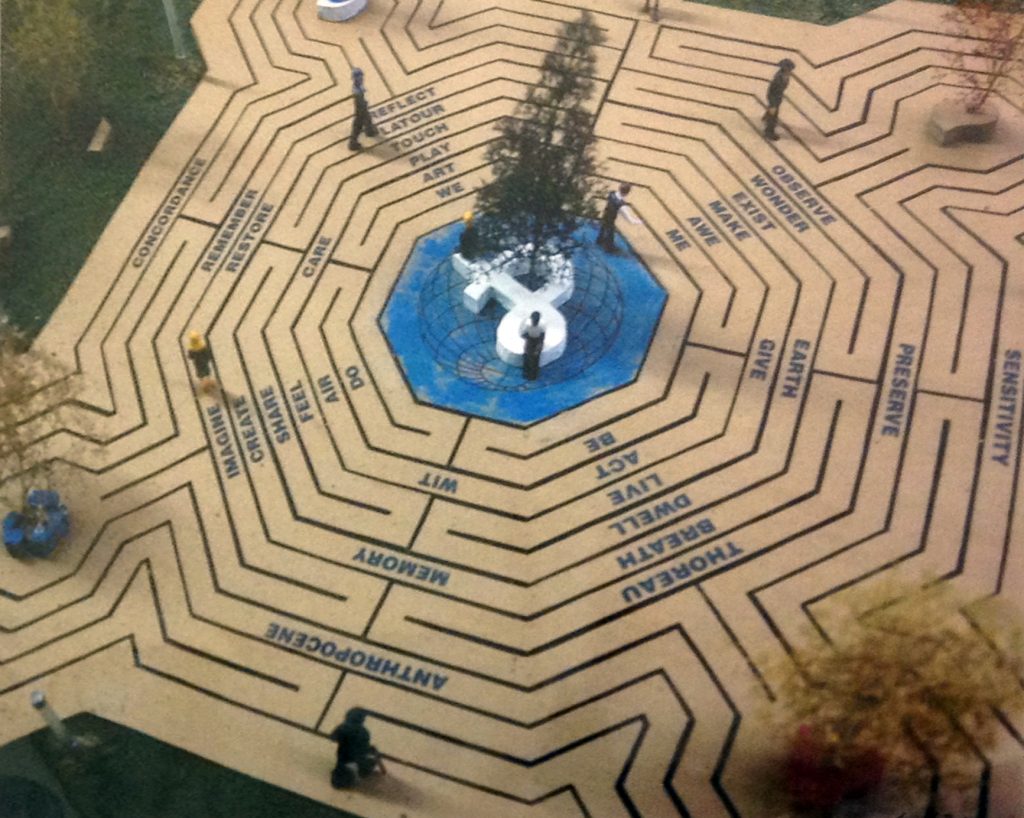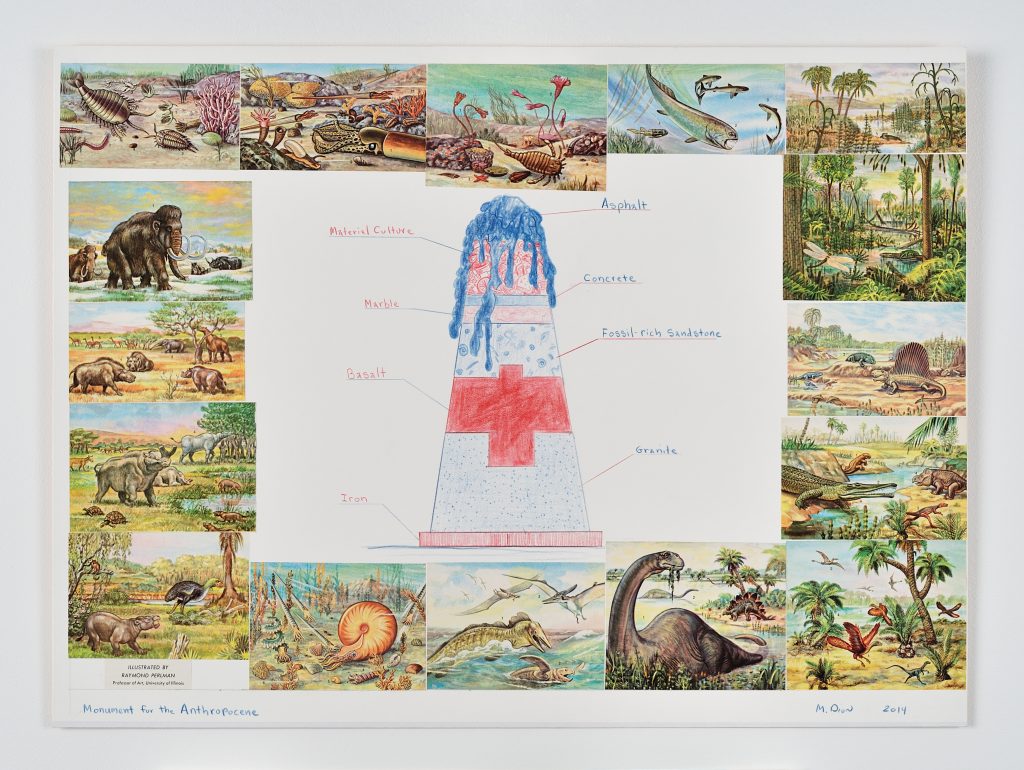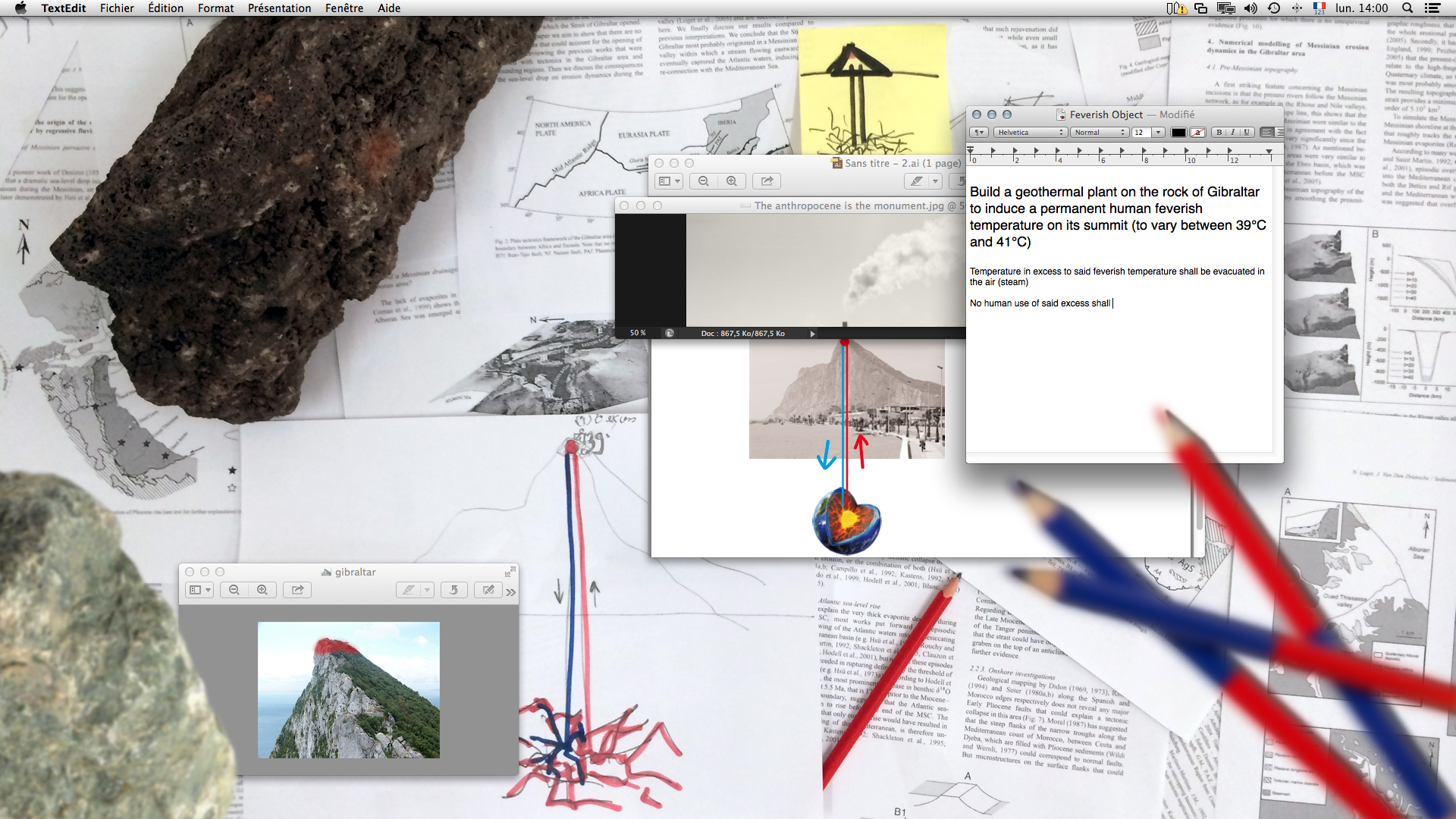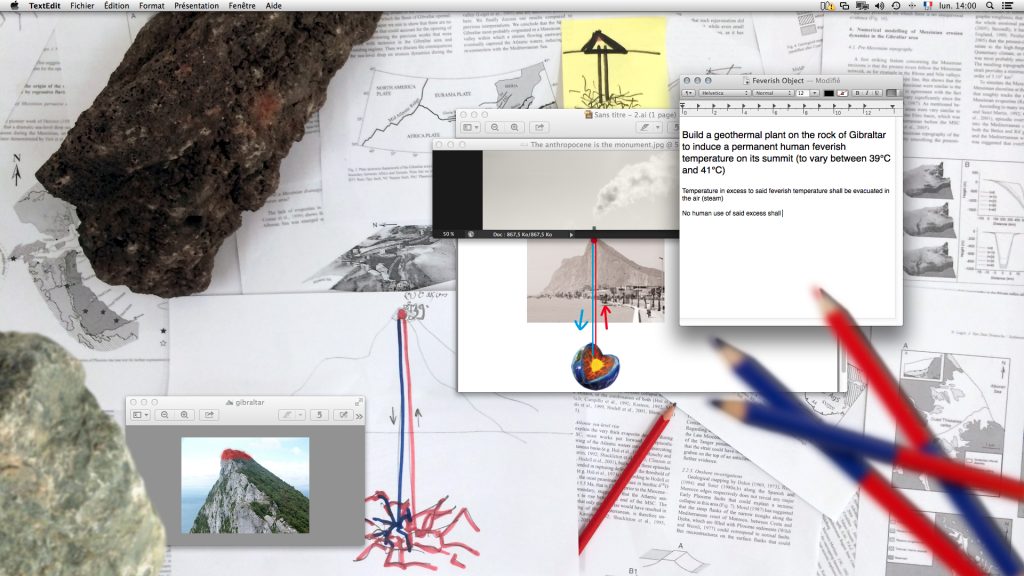Etienne Chambaud
Project for a Monument to the Anthropocene
“Build a geothermal plant on the rock of Gibraltar to induce a permanent human feverish temperature on its summit (to vary between 39oC and 41oC. Temperature in excess to said feverish temperature shall be evacuated in the air (steam). No human use of said excess shall be allowed.”
Artist Bio
Étienne Chambaud, born in 1980 in Mulhouse, France, studied at Ecole cantonale d’art de Lausanne (ECAL), Villa Arson in Nice, and Ecole nationale des Beaux-Arts (ENBA) in Lyon. In 2022, he earned a PhD from the SACRe program of PSL University, Ecole Normale Supérieure, and Ecole Nationale Supérieure des Beaux-Arts, Paris. Working and residing in Paris, Chambaud’s multidisciplinary practice challenges conventional categories imposed on experiences, objects, and disciplines. His works, ranging from individual pieces to installations and exhibitions, destabilize notions of art’s definition, the artist’s conceptualization and production process, and the form and history of exhibitions. Through his beautiful and complex creations, Chambaud offers a transformative experience, altering viewers’ perceptions and understanding. He has participated in residency programs such as EMPAC in Troy, NY (2017), and his solo exhibitions include “Lâme” at LaM – Lille Métropole Musée d’art moderne, d’art contemporain et d’art brut, Villeneuve-d’Ascq (2022), “Negative Knots” at La Kunsthalle Mulhouse, Mulhouse (2018), and “Color Suite” at Palais de Tokyo, Paris (2009).
Themes: atmosphere, climate, oceans
Category: Edifices
